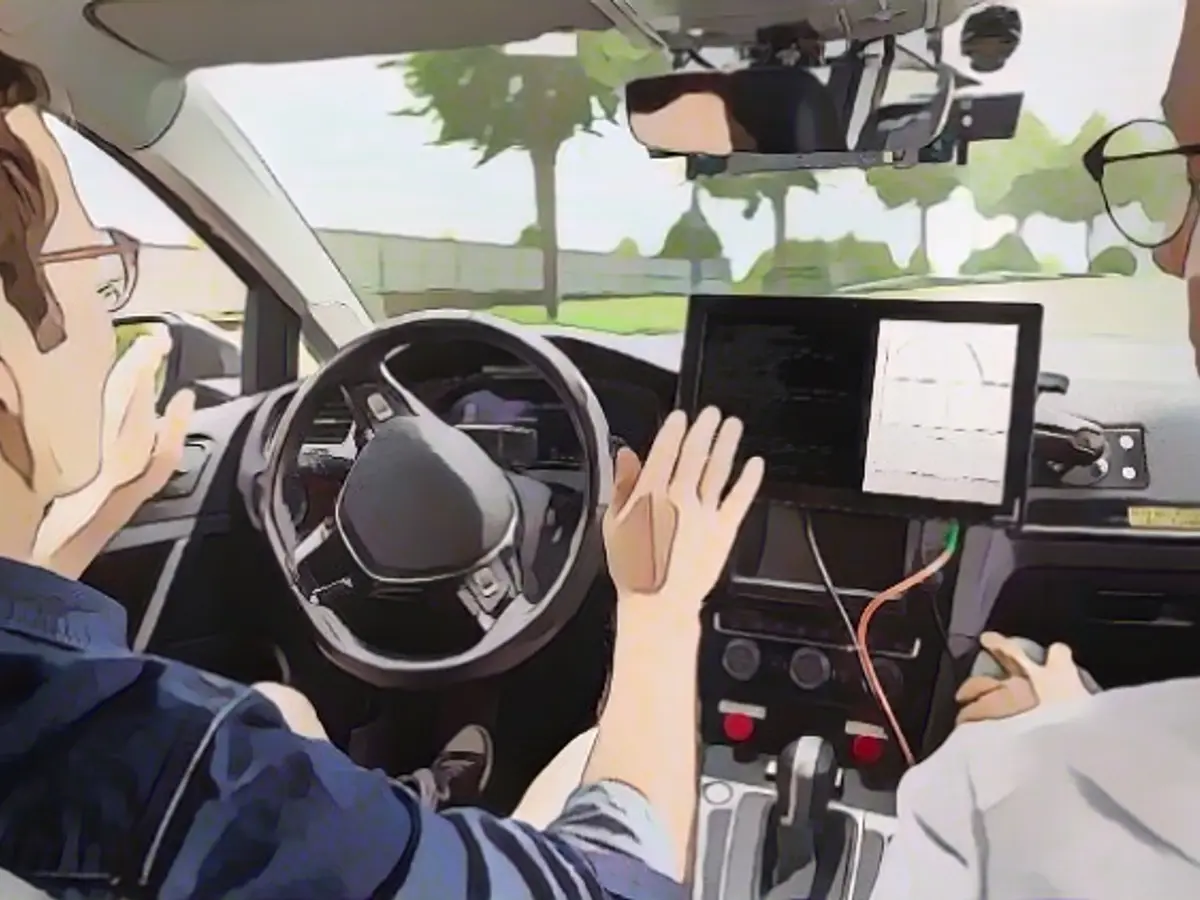Navigating the Twists and Turns of Autonomous Driving Development
Autonomous driving has been the talk of the automotive world, with promises of self-driving vehicles gracing our streets by the mid-2020s. However, as we inch towards this future, it seems the road ahead is fraught with unexpected obstacles. Let's dive into the five stages of autonomous driving, their current standing, and why our expectations might require a reality check.
The international engineering organization SAE laid the groundwork for this technology, establishing a five-tier classification system for autonomous cars. While some adjustments have been made, the SAE hierarchy remains a widely recognized benchmark, even as certain levels prove more difficult than anticipated.
The Driver's Throne: Level 0
Assistance at its finest, drivers stay in control while receiving support for tasks like blind spot warnings and maintaining safe distances from the vehicles in front. Level 0 tech is becoming prevalent in a range of new vehicles, from entry-level to high-end models.
Co-Pilot Welcome: Level 1
In this stage, assistive technology takes over individual driving tasks, such as lane keeping and adaptive cruise control, while the human driver remains involved in overall vehicle operation. Level 1 systems are becoming more common, especially in premium vehicles from major manufacturers.
Steering Handover: Level 2
Level 2 technology enables the vehicle to take charge of specific tasks like lane centering and automatic braking and acceleration. The human driver is still responsible for the vehicle's overall operation but can relinquish control of the steering wheel for brief periods. Most manufacturers are now offering Level 2 technology in their vehicle lineups.
The Autonomous Chaperone: Level 3
As autonomy progresses, Level 3 vehicles can manage longer stretches of driving but still require driver intervention upon request, leaving many questioning whether true autonomy is within reach.
The Keyless Ride: Level 4
Level 4 vehicles offer autonomy in specific applications, including highway driving and urban environments. Many mobility providers already offer this level of autonomy for their robotaxis and robo-shuttles, especially in selected cities worldwide.
Canceling the Keys for Good: Level 5
Autonomy reaches its zenith at Level 5, where the vehicle operates with full control in all conditions and weather, allowing passengers to kick back and fully enjoy their commute. Though a Level 5 market launch may not be imminent, innovative developments are inching us closer to this goal.
A Rocky Path to Autonomy
The widely adopted SAE classification system is currently under scrutiny, largely due to criticism from the German Federal Highway Research Institute (BASt). The BASt proposes a simplified three-mode model centered around "autonomous mode," which incorporates scenarios in which the computer serves as the primary driver, similar to SAE levels 4 and 5.
The BASt terms "conditional automation" as the equivalent of SAE's Level 2 and Level 3. Level 4, under this new model, takes on the name "high automation." The BASt suggests that the previous terminology should be reserved for specialist audiences, with the proposed system streamlining communication between experts and the public regarding autonomous driving.
As the push towards Level 4 and Level 5 autonomous vehicles progresses, researchers, automakers, and regulatory entities grapple with creating robust and efficient communication protocols, addressing needs in diverse driving scenarios, from urban environments to varying weather conditions on the highway.
In summary, while the journey toward Level 5 autonomous vehicles presents a rollercoaster of anticipation and uncertainty, innovation in technology and continuous progress in the automotive sector will draw us closer to a fully autonomous future.
Challenges in Achieving Level 4 and Level 5 Autonomous Driving
Level 4 Challenges
- Geofencing constraints
- Handling system failures and ensuring safety
- Overcoming challenges in adverse weather conditions
Level 5 Challenges
- Overcoming technical hurdles in developing advanced AI and machine learning models
- Addressing regulatory and legal issues, including liability concerns
- Gaining public trust and acceptance
Advancements in Achieving Level 4 and Level 5 Autonomous Driving
Level 4 Advancements
- Improvements in sensor technologies and AI
- Infrastructure development to support Level 4 autonomous vehicles
- Real-world testing and validation
Level 5 Advancements
- Development of specialized hardware and AI chipsets
- Continued innovation in AI and neural network technologies
- Public trials and demonstrations to build trust and public understanding
Updating the SAE Classification System
Over time, the SAE classification system, as outlined in J3016, is revised to account for the evolving landscape of autonomous driving technologies. Revisions have included updates to definitions, requirements, and safety standards, bringing the system in line with advancements and addressing challenges.







